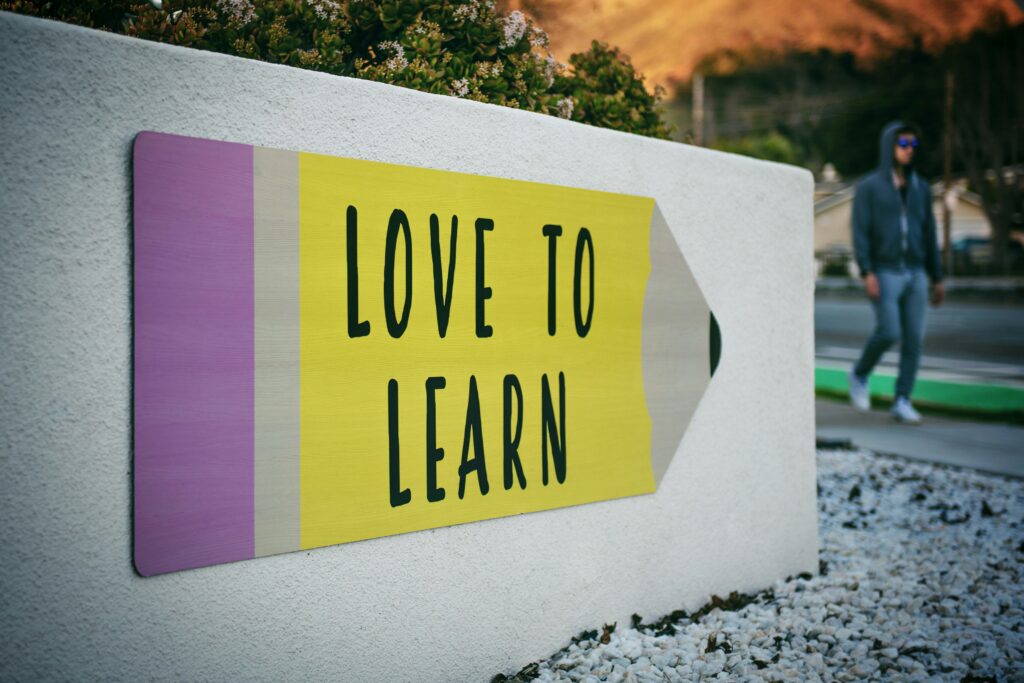You may wonder, what exactly is Tailored Education?🤔 Essentially, it’s an approach to learning that recognizes the unique needs, interests, and abilities of individual learners, focusing on creating a personalized educational path for them. It’s about moving beyond the traditional ‘one-size-fits-all’ paradigm and crafting an enriching learning journey, particularly for niche audiences.

This article will deep dive into the concept of Tailored Education, revealing its many facets, and how it can help craft customized learning paths for niche audiences. For educators, e-learning platforms, and anyone involved in the realm of knowledge delivery, this is a must-read.📖
So, why are we talking about Tailored Education now? Well, we live in an era where information is abundant, and learners are increasingly diverse. Not everyone learns the same way, at the same pace, or even has the same interests or goals. And the current education system, while trying its best, often struggles to cater to this broad range of learning styles and objectives. That’s where Tailored Education steps in.👣
What Will We Cover?
Our exploration of Tailored Education will unfold across multiple dimensions, as we cover:
- The principles and components of Tailored Education.
- How to identify the unique learning needs of your niche audience.
- The process of designing a tailored learning path, complete with examples from various fields.
- The role of technology in enabling Tailored Education.
- The potential benefits and challenges of implementing Tailored Education strategies.
We’ll be delving deep into each of these topics, dissecting the intricacies of Tailored Education and illustrating how it can be leveraged for maximum learner engagement and achievement.✨
Whether you’re an educator, an e-learning platform owner, or just someone fascinated by the concept of personalized learning, we invite you to join us on this enlightening journey through the realm of Tailored Education. Ready to dive in?🏊♀️
Why Tailored Education?
Before we get into the ‘how’, let’s first understand the ‘why’. Why is Tailored Education becoming so crucial in today’s educational landscape? The answer lies in the very nature of our learners.
Today’s learners are diverse – in age, culture, learning style, and objectives. The conventional ‘one-size-fits-all’ approach to education often fails to cater to this diversity, leading to subpar learning experiences. Tailored Education, on the other hand, with its emphasis on customization and personalization, can help create learning paths that align with the individual learner’s pace, style, interests, and goals.🎯
In a nutshell, Tailored Education is about making learning more engaging, more meaningful, and ultimately, more effective. And that’s what we’ll be exploring in this article. Stay tuned!🚀
Unlocking the Potential of Tailored Education
In an era where learning styles are as diverse as the learners themselves, a one-size-fits-all approach in education is a thing of the past. Enter tailored education: an approach that crafts customized learning paths for niche audiences, ensuring each student’s learning experience is as unique as they are. This approach not only promotes individual growth but also prepares learners to excel in specialized fields. Let’s delve deeper into the world of tailored education, discussing its benefits, the role of technology in its implementation, and how it can be effectively employed.
YouTube Video: “Personalized Learning: A Working Model” by Edutopia.
Understanding Tailored Education
Tailored education is a highly individualized learning approach, where instructional techniques, resources, and pacing are adjusted to fit the specific learning needs, interests, and abilities of each learner. Unlike traditional educational models where the curriculum is predetermined and uniform, tailored education takes into account individual learning styles, backgrounds, and career aspirations.
The Significance of Tailored Education
Tailored education recognizes that each learner has unique strengths and weaknesses, and acknowledges that every learner absorbs, processes, and retains information differently. By crafting customized learning paths, this approach ensures that learners are not just passive recipients of information, but active participants in their learning journey. This kind of personalized attention not only enhances learners’ comprehension but also increases their motivation and engagement.
Impact of Tailored Education on Niche Audiences
Tailored education is particularly beneficial for niche audiences who require specialized learning. Whether it’s coding, digital marketing, robotics, or any other specialized field, tailored education helps learners acquire in-depth knowledge and develop industry-specific skills, better preparing them for their chosen careers.
Technology and Tailored Education: A Perfect Blend
The advent of technology has greatly simplified the process of implementing tailored education. With the help of sophisticated software, teachers can create and manage individualized learning paths more efficiently. From tracking learner progress to suggesting personalized learning resources, technology plays a pivotal role in the successful implementation of tailored education.
Use of Learning Management Systems (LMS)
Learning Management Systems (LMS) have emerged as a significant tool in tailored education. These platforms allow educators to deliver customized content, track learner progress, and provide individualized feedback. Some popular LMS platforms include Moodle, Canvas, and Blackboard.
Data Analytics in Tailored Education
Data analytics play a crucial role in tailored education. With the help of analytics, educators can monitor learners’ performance, identify learning gaps, and suggest targeted interventions. Data analytics also help in predicting learner performance, thus allowing educators to make proactive decisions.
Adaptive Learning Technologies
Adaptive learning technologies are a key component of tailored education. These technologies use algorithms and artificial intelligence to adapt instructional content based on learners’ performance and learning pace. Examples of adaptive learning technologies include DreamBox Learning and Knewton.
Creating Effective Tailored Education Models
Designing effective tailored education models involves a number of steps, including identifying learning needs, designing personalized learning paths, employing the right technology, and continuously monitoring and adjusting the learning process.
Identifying Learning Needs
The first step in creating a tailored education model is identifying learners’ needs. This involves understanding their learning styles, interests, and career aspirations. Educators can use various tools and techniques for this purpose, including surveys, interviews, and diagnostic assessments.
Designing Personalized Learning Paths
Once learning needs are identified, educators can design personalized learning paths that cater to those needs. This involves creating a curriculum that is flexible, adaptable, and learner-centered. Educators should also ensure that learning paths are inclusive and cater to diverse learning styles.
Using Technology Effectively
As we’ve discussed earlier, technology plays a vital role in tailored education. Whether it’s LMS platforms, data analytics, or adaptive learning technologies, educators should be adept at using these tools to deliver personalized learning.
Continuous Monitoring and Adjustment
Finally, tailored education is not a set-it-and-forget-it model. It requires continuous monitoring and adjustment. Educators should regularly assess learners’ progress, identify learning gaps, and adjust instruction accordingly. They should also be open to feedback from learners and make necessary changes to enhance the learning experience.
Comparing Traditional Education and Tailored Education
| Traditional Education | Tailored Education | |
|---|---|---|
| Learning Style | One-size-fits-all | Individualized |
| Curriculum | Uniform | Flexible and adaptable |
| Learner Involvement | Passive recipients of information | Active participants in learning |
| Use of Technology | Limited | Extensive |
| Feedback | General | Individualized |
YouTube Video: “The Future of Education: Personalized Learning” by The RSA.
In conclusion, tailored education holds immense potential for enhancing learning outcomes, particularly for niche audiences. By leveraging the power of technology, we can ensure that every learner has a personalized and fulfilling learning journey. So, let’s embrace this approach and reshape the future of education.
Conclusion
In closing, we have traversed a multifaceted journey through the intricate world of software engineering. This article has aimed to dissect complex technological concepts, breaking them down into digestible components for our comprehension. We’ve strived to illuminate the significance of software engineering, its concepts, applications, and the profound impact it has on the world around us. 💻
Beginning with the very foundations, we delved into the principles of software engineering, emphasizing the need for a systematic, disciplined and quantifiable approach. We highlighted the core steps involved, from requirement gathering to maintenance, stressing the importance of each phase in the software development life cycle. 🔄
We then navigated the sea of software design principles, exploring concepts like modularity, robustness, usability, and reusability. These principles form the blueprint of software development, directing developers towards creating software that is efficient, reliable, and user-friendly. 📐
Our discussion extended to software testing techniques, presenting the myriad ways to ensure the reliability and efficiency of the software. We underscored the significance of testing in detecting defects, preventing issues, and enhancing the overall quality of the software. 🕹️
Lastly, we ventured into the realm of agile software development. Emphasizing its benefits, we pointed out how agile methodologies promote adaptability, continuous improvement, and customer satisfaction. 🎯
In a world increasingly dependent on technology, the role of software engineering has never been more critical. The concepts we’ve discussed are not merely theoretical – they have practical implications that can profoundly impact our daily lives. The next time you use a mobile application, browse a website, or work on a software, remember the intricate engineering principles that make it all possible. 🌐
I encourage you to delve deeper, apply these principles, and explore the untapped potential that software engineering holds. Don’t hesitate to share your thoughts or questions in the comments below, or share this article with those who might find it beneficial. Let’s continue to learn, grow, and innovate together. 👨💻👩💻
For further reading, refer to these excellent resources: [Software Engineering: A Practitioner’s Approach](https://link.com) and [The Pragmatic Programmer: Your Journey To Mastery](https://link.com) . They provide a wealth of knowledge and practical insights into the field of software engineering.
Remember, in the realm of software engineering, the only constant is change. As technology evolves, so must we. So, let’s keep learning, keep growing, and keep pushing the boundaries of what’s possible. The future of software engineering is indeed bright, and it beckons us all. 💡
Until next time, happy coding! 🚀
References:
[1] Software Engineering: A Practitioner’s Approach
[2] The Pragmatic Programmer: Your Journey To Mastery



